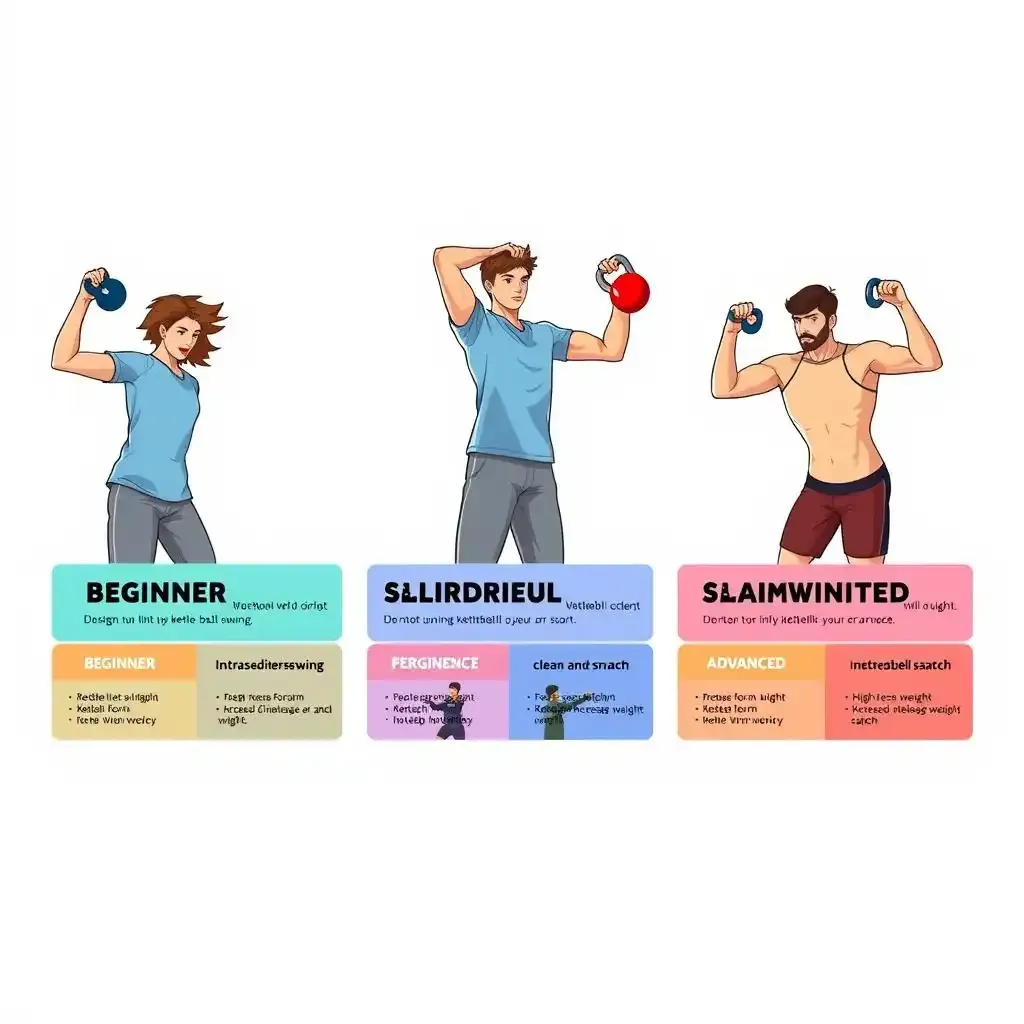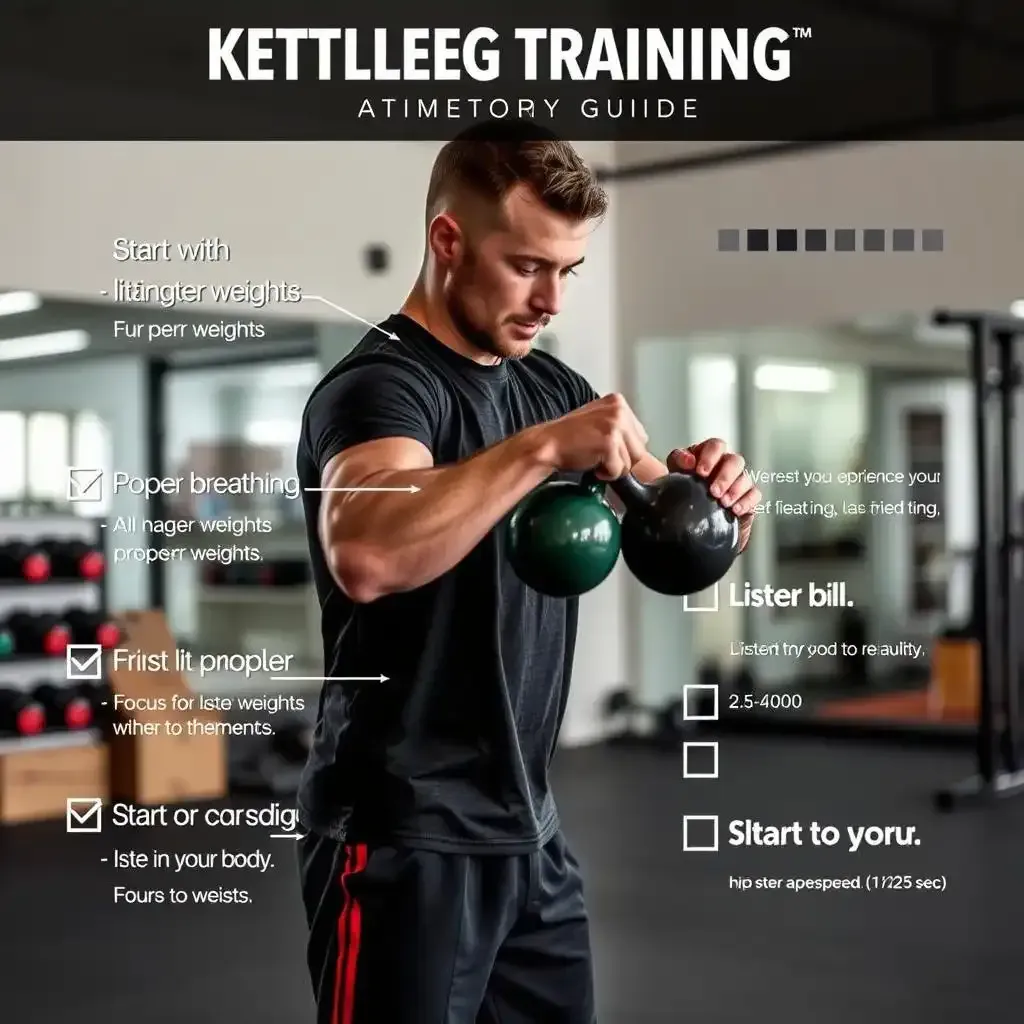Table of Contents
So, you're thinking about adding kettlebells to your fitness routine? Smart move! Kettlebells are amazing tools for building strength, improving endurance, and even boosting your overall fitness. But with so many different kettlebell workout charts and programs out there, it can feel a little overwhelming to know where to start. That's where kettlebellworkout.homes comes in. We're here to help you guide the world of kettlebells and find the perfect workout plan for your needs and goals. This article will guide you through choosing the right kettlebell workout chart, designing your own, exploring some sample programs, and most importantly, ensuring you train safely and effectively. Whether you're a complete beginner or a seasoned fitness enthusiast, we've got you covered. Let's examine in and let loose your inner strength!
Choosing the Right Kettlebell Workout Chart for You

Choosing The Right Kettlebell Workout Chart For You
Finding Your Fitness Level
Hey there, fellow kettlebell enthusiast! Picking the right kettlebell workout chart is like choosing the perfect pair of shoes – you wouldn't wear running shoes for a fancy dinner, right? Similarly, you need a workout plan that matches your current fitness level. Are you brand new to kettlebells? If so, start with a beginner program. These usually focus on teaching you the basic movements, like kettlebell swings and goblet squats, and gradually building strength and stamina. Don't try to run a marathon before you can even jog around the block! Check out our beginner-friendly guides for more info; we've got plenty of resources to help you get started. For example, our guide to kettlebell basics will walk you through everything you need to know.
- Beginner: Focus on proper form and mastering basic movements.
- Intermediate: Increase weight and reps, explore more complex exercises.
- Advanced: Incorporate high-intensity intervals, challenging variations.
Setting Your Goals
What are you hoping to achieve with your kettlebell training? Are you aiming to build muscle, boost your endurance, improve your overall fitness, or maybe even lose weight? Your goals will heavily influence the type of kettlebell workout chart you choose. A program focused on strength building will look different from one designed for weight loss. Think of it as building a house – you wouldn't use the same blueprints for a tiny cottage as you would for a sprawling mansion! For example, if you're aiming for weight loss, a routine that incorporates more cardio-based exercises might be a better choice. You can find more information about our weight-loss plans on our website.
Goal | Workout Chart Focus |
|---|---|
Strength | Heavy weights, lower reps |
Endurance | Lighter weights, higher reps |
Weight Loss | Combination of strength and cardio |
Considering Your Time and Resources
Life gets busy, I know! You need a kettlebell workout chart that fits into your schedule and available resources. Do you have access to a gym, or are you working out at home? Some programs require specialized equipment, while others can be done with just a kettlebell and a little space. Consider your time commitment too. A 12-week program requires more dedication than a shorter, more focused routine. Before you investigate in, check out our selection of workouts that you can do at home with minimal equipment. Remember, consistency is key, so choose a program you know you can stick to!
"The best workout is the one you'll actually do." – Unknown
Designing Your Own Kettlebell Workout Chart: A StepbyStep Guide
Okay, so you're ready to ditch the pre-made plans and design your own kettlebell workout chart? Awesome! It's like being a mad scientist in the gym – you get to mix and match exercises to create your perfect fitness potion. But don't worry, you don't need a PhD in exercise science. I'll guide you through it step-by-step. Think of this as building with LEGOs – you start with the basics and then get creative!
First, decide on your goals. Want to get stronger? Leaner? More energetic? Maybe a mix of everything? Your goals will dictate the types of exercises you choose and how often you'll work out. This is crucial, like choosing the right ingredients for your cake – you wouldn't put broccoli in a chocolate cake, would you? If you're aiming for strength, you'll focus on heavier weights and fewer repetitions. For endurance, it's lighter weights and more reps. Check out our beginner-friendly guides for more kettlebell exercise ideas; we've got a ton of resources to help get you started, like our .
- Define your goals (strength, endurance, weight loss, etc.)
- Choose your exercises (swings, squats, presses, rows, etc.)
- Set your reps and sets (start with manageable numbers)
- Plan your rest periods (give your muscles time to recover)
- Create a schedule (how many days a week will you work out?)
Next, choose your exercises. There's a whole world of kettlebell moves out there – kettlebell swings, goblet squats, Turkish get-ups, the list goes on. Don't try to do everything at once. Start with a few basic exercises you're comfortable with and gradually add more as you get stronger. Think of it like learning to ride a bike – you don't start with wheelies, right? You start with the basics and work your way up. Need some ideas? Our kettlebell exercises for starters page is a great place to begin!
Exercise | Sets | Reps | Rest |
|---|---|---|---|
Kettlebell Swings | 3 | 10-12 | 60 seconds |
Goblet Squats | 3 | 10-12 | 60 seconds |
Kettlebell Rows | 3 | 10-12 per side | 60 seconds |
Now, it's time to determine your sets and reps. This is where you decide how many times you'll perform each exercise (reps) and how many times you'll do the entire set (sets). Start with manageable numbers and gradually increase them as you get stronger. Don't push yourself too hard, especially when you're starting out. Remember, consistency is key. It's better to do a shorter workout consistently than a long, intense workout once a month. Learn more about building a solid routine with our kettlebell workout plan guide.
Finally, create a workout schedule. How many days a week will you work out? Three days a week is a great starting point. Remember to include rest days to allow your muscles to recover and rebuild. This is super important, just like plants need sunlight and water, your muscles need rest to grow. Overtraining can lead to injuries and burnout, so don't push yourself too hard too soon. For a structured approach, consider checking out our .
"The body achieves what the mind believes." – Napoleon Hill
Sample Kettlebell Workout Charts and Programs

Sample Kettlebell Workout Charts And Programs
Beginner-Friendly Programs
For those just starting out with kettlebells, it's essential to find a program that eases you into the world of kettlebell training. A beginner-friendly program should focus on teaching you the basic movements, such as swings, cleans, and presses, and gradually increase the intensity as you become more comfortable. Check out our kettlebell workout for beginners guide for a great starting point!
One excellent example is the 5-Week Full Body Kettlebell Workout chart available on Muscle & Strength. This program includes a workout plan that helps build a solid foundation of strength, endurance, and mobility. The best part? It's designed specifically for beginners, so you can start with lighter weights and gradually progress as you become stronger.
Week | Workout | Focus |
|---|---|---|
1-2 | Introduction to kettlebells | Basic movements, lighter weights |
3-4 | Progressive overload | Increase weight, reps, and sets |
5 | Final week | Challenging workout with heavier weights |
Intermediate and Advanced Programs
As you progress in your kettlebell process, you'll want to explore more challenging programs that push your limits and help you achieve your goals. For intermediate and advanced kettlebell enthusiasts, a well-structured program can make all the difference in achieving success. Consider our guide to take your training to the next level!
One excellent example is the 12-Week Muscle-Building Kettlebell Master-Plan, which includes a 5-day split routine with exercises for legs, arms, shoulders, chest, back, glutes, calves, and cardio. This program is designed for those with some experience with kettlebells and looking to build significant muscle mass. With progressive overload and varying intensity, you'll be challenged to push your limits and achieve remarkable results.
- Day 1: Legs and cardio
- Day 2: Arms and shoulders
- Day 3: Chest and back
- Day 4: Glutes and calves
- Day 5: Core and cardio
"The only bad workout is the one that didn't happen." – Joe Cirulli
Safety and Considerations for Kettlebell Training

Safety And Considerations For Kettlebell Training
Hey there, friend! Kettlebells are awesome, but like any workout, safety's key. Think of it like riding a bike – you wouldn't jump on a racing bike without learning to ride a tricycle first, right? Start slow, using lighter weights. Mastering the basic moves, like the kettlebell swing, is more important than how much weight you lift. Check out our for some handy tips on proper form. Bad form leads to injuries, and nobody wants that!
- Start with lighter weights.
- Focus on proper form; it's more important than heavy lifting.
- Listen to your body. Pain is a warning sign – stop and rest.
Warm-up before you start, just like you'd stretch before a race. A quick 5-10 minutes of cardio and some dynamic stretches will prep your muscles. Cool down afterward too; this helps prevent soreness. We've got some great warm-up and cool-down routines you can check out on our warm-up page and cool-down page. Think of it like tuning up your car before a long drive – you wouldn't hit the highway without checking the oil, would you?
Warm-up | Workout | Cool-down |
|---|---|---|
5-10 minutes cardio | Kettlebell exercises | 5-10 minutes stretching |
Don't forget to breathe! Proper breathing is super important for kettlebell exercises. It helps you maintain good form and prevents you from getting winded. Learn more about breathing techniques in our breathing techniques guide. It's like learning to blow bubbles – you need the right technique to get big, beautiful bubbles!
Listen to your body. If something hurts, stop. Pain is your body's way of saying, "Hey, something's not right!" Don't push through pain; you'll only make things worse. Check out our injury prevention guide for more tips. It's better to take a break and recover than to risk a serious injury. Remember, consistency is key; a few good workouts are better than one intense workout that ends in injury.
- Don't push through pain.
- Rest and recovery are just as important as the workout itself.
- Listen to your body!
Finally, start slow. Don't try to be a hero on your first day. It's better to start with a lighter weight and gradually increase the weight as you get stronger. Jumping into a super intense workout right away is a recipe for disaster. We have plenty of beginner-friendly resources, like our page, to help you ease into it. Consistency is key! Better to have several easy workouts than one intense workout that leaves you sore and discouraged.
"The difference between ordinary and extraordinary is that little extra." – Jimmy Johnson
Final Thought
Finding the right kettlebell workout chart is just the first step on your fitness trip. Remember that consistency and proper form are key to seeing results. Don't be afraid to experiment, adjust your routine as needed, and most importantly, listen to your body. With dedication and the right approach, kettlebell training can help you achieve your fitness goals and reveal a whole new level of strength and well-being. Keep exploring resources like kettlebellworkout.homes for more tips and inspiration!